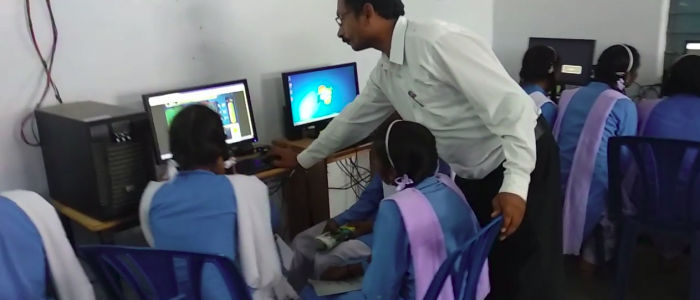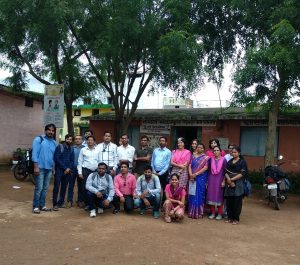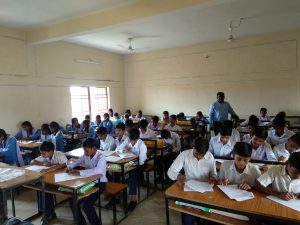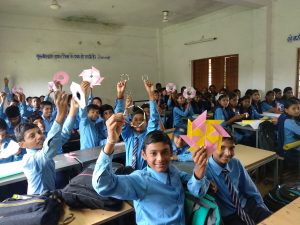Maths- Learning Outcome Study in Dhamtari, Chhattisgarh (01.07.2018- 31.10.2018)
The CLIx mathematics team conducted a Learning Outcome (LO) study to assess the efficacy of its Geometric Reasoning (GR) module and the effect of prolonged, engaged teacher support and lesson planning on students’ learning. The study was conducted with Grade 9 students in ten state government higher secondary schools between July and October 2018. The CLIx maths team anchored this study with the support of teachers, students, school heads and CLIx field team members.
The planning and initial groundwork for the study started in April 2018. An orientation workshop for the LO study schools’ mathematics teachers was conducted on 19–20 July 2018. However, discussion and planning with these teachers happened throughout the GR module roll out in schools.
Orientation Workshop, Dhamtari, 19-20 July 2018
Interestingly, the maths team’s groundwork for the study coincided with the groundwork for rice cultivation in Dhamtari area. During our school visits, the maths team were treated to the sight of endless lush green rice fields, which are the reason Chhattisgarh is called the Rice Bowl of India.
Green paddy fields, Dhamtari
The Maths LO study began in July 2018 with the administering of the pre-test in ten LO study schools (in selected Grade 9 classes), followed by FGDs (focus group discussions) with 2–2 pairs of boys and girls (two above average scorers and two average scorers in the pre-test) in 4 schools. These FGDs were video-recorded.
Pre-test being conducted in a school
The implementation of the GR module in CLIx schools for this LO study started on 23 July 2018. The module has both hands-on and digital activities along with a crucial classroom discussion part.
Students showing Pinwheels they constructed
Most of the CLIx maths team members were in the field during this time and they regularly visited schools in pairs for observation of CLIx maths lessons. One member took detailed notes on the happenings in the class, while the other member filled a tally sheet to gauge how far the CLIx maths pedagogic pillars (creation of safe space, learning from mistakes, collaborative learning and authentic learning) were adopted in classroom practice. Some classroom sessions and teachers’ interviews were video-recorded with the help of the CLIx media team. The study in the intervention schools concluded by the first week of September with the administering of the post-test and FGDs.
Learning Outcome Math lesson in progress
For the comparative study, ten comparable non-intervention schools were chosen based on DISE data. In these schools, the same steps as administered in intervention schools were repeated from September end to mid-October. The team also extracted the CLIx platform data from the computers to further analyse students’ engagement with the module. The maths team feels gratitude towards all these schools and teachers who were very welcoming during our visit for the study.









